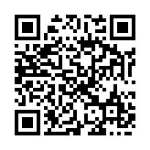明清文人裝潢書籍動機之探討
作者:黃文德(國家圖書館漢學研究中心編輯)
卷期:67卷第2期
日期:2022年9月
頁碼:75-95
DOI:https://doi.org/10.6210/JNTNU.202209_67(2).0003
摘要:
明清時期文人藏書家熱中於書籍裝幀,本文內容主要在探究此一風尚形成之歷史背景,並試圖整理明清時期重要藏書家對古籍採取裝潢之動機,分析其背後之多元意義。為探究此一現象的根源,本文試圖由中國近世書籍形制的鑑賞與發展切入,先就隋唐乃至宋元之間文獻形制轉變的大時代脈絡來觀察,再透過分析個案,據以整理明清藏書家裝潢古籍之動機,包括整齊文獻外觀、延長文獻保存、識別遞藏出處、新收書籍之慣例、歷史情感因素、享受製書之趣、對於舊裝不滿、復原古本裝幀、展現考據成果。
關鍵詞:書籍形制、裝潢、藏書、藏書家
 《詳全文》
《詳全文》

參考文獻:
- 南唐‧李煜,〈題金樓子後〉,清‧彭定求等編,《(御定)全唐詩》,收入《景印文淵閣四庫全書》,臺北市:臺灣商務印書館,1983。
- 唐‧平曾,〈留別薛僕射〉,清‧彭定求等編,《(御定)全唐詩》,收入《景印文淵閣四庫全書》,臺北市:臺灣商務印書館,1983。
- 唐‧杜甫,〈送諸葛覺往隨州讀書〉,清‧彭定求等編,《(御定)全唐詩》,收入《景印文淵閣四庫全書》,臺北市:臺灣商務印書館,1983。
- 唐‧杜牧,〈許七侍御棄官東歸瀟灑江南,頗聞自適,高秋企望題詩寄贈十韻〉,清‧彭定求等編,《(御定)全唐詩》,收入《景印文淵閣四庫全書》,臺北市:臺灣商務印書館,1983。
- 唐‧李林甫等,《大唐六典》,明正德乙亥蘇州刊本。
» 展開更多
- 南唐‧李煜,〈題金樓子後〉,清‧彭定求等編,《(御定)全唐詩》,收入《景印文淵閣四庫全書》,臺北市:臺灣商務印書館,1983。
- 唐‧平曾,〈留別薛僕射〉,清‧彭定求等編,《(御定)全唐詩》,收入《景印文淵閣四庫全書》,臺北市:臺灣商務印書館,1983。
- 唐‧杜甫,〈送諸葛覺往隨州讀書〉,清‧彭定求等編,《(御定)全唐詩》,收入《景印文淵閣四庫全書》,臺北市:臺灣商務印書館,1983。
- 唐‧杜牧,〈許七侍御棄官東歸瀟灑江南,頗聞自適,高秋企望題詩寄贈十韻〉,清‧彭定求等編,《(御定)全唐詩》,收入《景印文淵閣四庫全書》,臺北市:臺灣商務印書館,1983。
- 唐‧李林甫等,《大唐六典》,明正德乙亥蘇州刊本。
- 唐‧姚合,〈和座主相公西亭秋日即事〉,清‧彭定求等編,《(御定)全唐詩》,收入《景印文淵閣四庫全書》,臺北市:臺灣商務印書館,1983。
- 唐‧張祜,〈高閑上人〉,清‧彭定求等編,《(御定)全唐詩》,收入《景印文淵閣四庫全書》,臺北市:臺灣商務印書館,1983。
- 唐‧韓愈,《韓文》,明嘉靖三十五年莫如士寧國刊韓柳文合集本。
- 唐‧魏徵等,《隋書》,元大德間饒州路儒學刊明正德間修補本。
- 宋‧朱熹,《論語集註》,明覆刊正統十二年司禮監刊本。
- 宋‧林逋,《宋林和靖詩集》,明萬曆四十一年錢塘何養純等校刊本。
- 宋‧柳永,《樂章集系》,清光緒辛丑海豐吳氏金陵刊本。
- 宋‧張邦基,《墨莊漫錄》,明刊稗海本。
- 宋‧歐陽脩,《歸田錄》,明萬曆間會稽商氏刊本。
- 明‧王世貞,《弇州山人四部稿》,明萬曆五年吳郡王氏世經堂刊本。
- 明‧朱曰藩,《山帶閣集》,明萬曆初年刊本。
- 明‧周嘉冑,《裝潢志》,清道光辛卯六安晁氏活字印本。
- 明‧楊慎,《升菴集》,收入《景印文淵閣四庫全書》,第1270冊,臺北市:臺灣商務印書館,1986。
- 清‧朱嘉勤,〈手書題記〉,宋‧楊甲撰,《六經圖》,南宋建刊巾箱本。
- 清‧祝廷錫,〈手書題記〉,宋‧魏野撰,《鉅鹿東觀集》,舊鈔本。
- 清‧徐松輯,《宋會要輯稿》,民國二十五年國立北平圖書館影印本。
- 清‧孫從添,《藏書記要》,臺北市:藝文印書館,1967。
- 清‧章鈺,〈手書題記〉,唐‧李賀,《唐李長吉詩集》,明萬曆癸丑刊本。
- 清‧程大昌,《演繁露》,收入《景印文淵閣四庫全書》,第852冊,臺北市:臺灣商務印書館,1983。
- 清‧程穆衡,〈手書題記〉,唐‧杜甫撰、元‧高楚芳編,《集千家註杜工部詩集》,明嘉靖十五年玉几山人校刊本。
- 清‧黃丕烈,〈手書題記〉,五代‧史虛白撰,《釣磯立談》,清揚州使院重刻楝亭十二種本。
- 清‧黃丕烈,〈跋〉,宋‧李上交撰,《近事會元》,清嘉慶十八年陸奎手鈔。
- 清‧黃丕烈,〈手書題記〉,宋‧南宮靖一撰,《小學史斷》,南宋末年刊本。
- 清‧黃丕烈,〈跋〉,宋‧陸游撰,《澗谷精選陸放翁詩集》,明弘治十年餘杭知縣冉孝隆刊本。
- 清‧黃丕烈,〈跋〉,宋‧戴復古,《石屏詩集十卷》,明弘治戊午廬州府刊配補影鈔本。
- 清‧黃丕烈,〈手書題記〉,元‧薩都拉撰,《雁門集》,明鈔本。
- 清‧葉昌熾,《藏書紀事詩》,臺北縣:藝文印書館,1967。
- 清‧葉德輝,《書林清話(外二種)》,北京市:北京聯合出版公司,2018。
- 清‧鄒奕孝、清‧翁同書,〈手書題記〉,宋‧林堯叟撰,《春秋經左氏傳句解》,元刊清乾隆間鄒奕孝鈔補本。
- 田潛山,〈手書題記〉,魏‧何晏撰,《論語集解》,日本正平間刊本。
- 光復書局編輯部,《書的故事》,臺北市:行政院新聞局,1992。
- 宋兆霖(主編),《護帙有道:古籍裝潢特展》,臺北市:國立故宮博物院,2014。
- 呂姿玲(主編),《書:紙文化的魅力》,臺北市:國家圖書館,2017。
- 邱添生,〈論「唐宋變革期」的歷史意義—以政治、社會、經濟之演變為中心〉,《歷史學報》,7期(1979),頁83-111。
- 松崎慊堂,《慊堂遺文(上)》,千葉縣:松崎健五郎,1901。https://doi.org/10.11501/893698。
- 奈須恒德,〈手書題記〉,明‧李恆撰,《魁本袖珍方大全》,明嘉靖丙戌詹氏西清書堂刊。
- 封思毅、王錫璋、吳碧娟、劉春銀,〈國立中央圖書館館藏資源〉,載於《臺灣地區漢學資源選介》,漢學研究中心(編),頁167-203,臺北市:漢學研究中心,1988。
- 島田翰,《古文旧書考》(古文舊書考),東京都:民友社,1905。
- 袁克文,〈手書題記〉,宋‧張孝祥撰,《于湖居士文集》,宋嘉泰元年刊本。
- 張乃熊,〈手書題記〉,宋‧王稱撰,《東都事略》,宋紹熙間眉山程舍人宅刊本。
- 宿白,《唐宋時期的雕版印刷》,北京市:生活‧讀書‧新知三聯書店,2020。
- 張家禎,〈楊玉成教授演講「雕版印刷的傳播迴路」紀要〉,http://mingching.sinica.edu.tw/en/Academic_Detail/895,2022年6月30日下載。
- 張圍東,《古籍之美:古籍的演變與發展》,新竹縣:方集出版社,2021。
- 許雅惠,〈北宋晚期金石收藏的社會網絡分析〉,《新史學》,29卷4期(2018),頁71-124。
- 黃寬重,〈兼容並蓄,藝文光影—南宋政治、士人與文化的發展及其特色〉,載於《文藝紹興—南宋藝術與文化特展‧書畫卷》,何傳馨(主編),頁18-30,臺北市:國立故宮博物院,2010。
- 黃寬重,《藝文中的政治:南宋士大夫的文化活動與人際關係》,北京市:北京大學出版社,2020。
- 溫台祥、蒲彥光、楊時榮,〈釋書籍「裝潢」與保存關係研究〉,《臺灣圖書館管理季刊》,4卷3期(2008),頁95-117。
- 鄧邦述,〈手書題記〉,漢‧毛亨傳,《詩經》,第4卷,第2冊,明刊本。
- 鄧邦述,〈題記〉,宋‧羅大經撰,《鶴林玉露》,明松陵王叔承校刊本。
- 鄧邦述,〈題記〉,宋‧龔明之撰,《中吳紀聞》,明末海虞毛氏汲古閣刊本。
- 鄧邦述,〈手書題記〉,《雜史二十一種》,穴硯齋鈔本。
- 盧雪燕,〈護帙有道—古籍裝潢特展籌展始末〉,《故宮文物月刊》,382期(2015),頁66-81。
- 盧慧紋,〈元初北方士大夫的書畫活動與鑒藏:以王惲(1227-1304)《秋澗先生大全集》為中心的幾點考察〉,《故宮學術季刊》,38卷2期(2020),頁47-82。
- 盧錦堂,〈中國古籍紙本裝幀演進考述〉,《佛教圖書館館刊》,49期(2009),頁48-60。
- 嚴文郁,《中國書籍簡史》,臺北市:臺灣商務印書館,1992。
- Brokaw, Cynthia J. “On the History of the Book in China.” In Printing and Book Culture in Late Imperial China, edited by Cynthia J. Brokaw and Kai-Wing Chow, 3-54. Berkeley, CA: University of California Press, 2005. https://doi.org/10.1525/9780520927797-004.
- Ko, Dorothy. The Social Life of Inkstones: Artisans and Scholars in Early Qing China. Seattle, WA: University of Washington Press, 2017.
- Rusk, Bruce. “Writer’s Block or Printer’s Block: The Book and Its Openings in Early Modern China.” In Impagination—Layout and Materiality of Writing and Publication, edited by Kuming (Kevin) Chang, Anthony Grafton, and Glenn W. Most, 273-300. Berlin, Germany: De Gruyter, 2021. https://doi.org/10.1515/9783110698756-010.
- Stefik, Mark. “The Next Knowledge Medium.” AI Magazine 7, no. 1 (1986): 34-46. https://doi.org/10.1609/aimag.v7i1.526.
Journal directory listing - Volume 67 (2022) - Journal of NTNU【67(2)】September (Special Issue: Exhibit Asia: Exploring National Image and Identity through Exhibition)
The Motivation and Connotations of Bookbinding and Book Adornment among the Ming and Qing Literati
Author: Wen-de Huang (National Central Library, Taiwan, Center for Chinese Studies, Editor)
Vol.&No.:Vol. 67, No. 2
Date:September 2022
Pages:75-95
DOI:https://doi.org/10.6210/JNTNU.202209_67(2).0003
Abstract:
Prior to the Song dynasty, Chinese books were predominantly in the form of bound scrolls (juan), and by the time of the Ming dynasty, thread or stitched bindings (xian zhuang) were gradually being adopted. Within this historical shift, a number of other transitional forms emerged, such as whirlwind binding (xuanfeng zhuang) and butterfly binding (hudie zhuang). These new forms of published materials foreshadowed the collection and identification of books and other documents by the literati of the Ming and Qing dynasties and inspired the trend for later book collecting communities to alter the bindings or decorative elements of their materials. The Rare Books Collection at the National Central Library provides an opportunity for patrons to observe how notable book collectors drove the evolution of the binding, and other physical features, of rare texts. This article highlights the motivations driving such efforts and analyzes the underlying personal and/or cultural connotations behind them. Book collectors came up with different binding styles or transformed other physical features of rare texts for various reasons, such as extending the lifespan of materials, marking the origin of a text, applying new decorative elements that had become customary, restoring ancient bindings, and exhibiting the results of their textual research; they may also do so for sentimental reasons, a love for book production or binding for its own sake, or a dissatisfaction with older book forms.
Keywords:physical make-up of books, book design, book collecting, book collectors